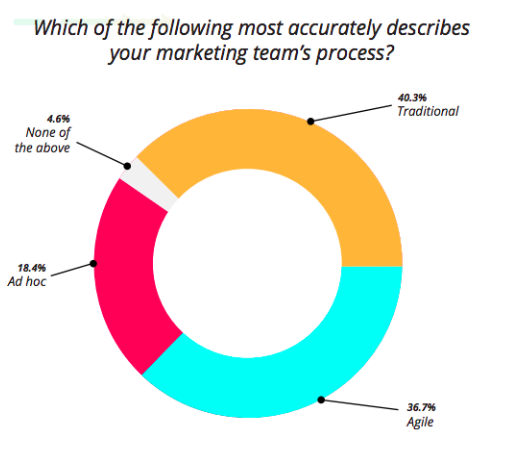New ventures face seemingly limitless obstacles when looking to survive, thrive, prosper, and effectively scale. The dream of every startup, or alteast before the current funding-era start-up thinking, is to reach effective market scale in order to provide their product to more customers and deliver maximum value to the marketplace in doing so. Scaling means the product or service is consumed in large volumes, with large earnings and thus making the impact startup founders dream that they can perpetuate for years to come.
Achieving scale is difficult for many reasons. Funding, resources, sales methodology, customer onboarding, hiring, team management, team building, customer retention, establishing culture are just a few of the very difficult challenges founders face when growing their organizations.
Meanwhile current market incumbents or large companies already at scale seem to hold all the cards and nearly every advantage. In this David V Goliath type matchup, large co’s usually have ample funding, more established brand recognition, reputation, human capital, and more. It can be tiring to find an edge as a startup when competing against larger competitors.
I would know, it’s a mountain I am climbing daily as I look to find the value-added opportunities and scale strategy to take my 7 person agency to much greater heights. BUT even amidst a sea of pushback, startups and smaller organizations do possess one very unique and situationally advantageous quality that large companies do not possess: AGILITY.
Mckinsey defines operational agility this way: “Agility is the ability of an organization to renew itself, adapt, change quickly, and succeed in a rapidly changing, ambiguous, turbulent environment.”
You can make an argument that in 2020, among a much steeper innovation curve, paradigm shifting technology, and unforeseen global events like we’re currently experiencing with the Coronavirus outbreak – agility has never been more crucial for survival.
Accenture’s recent report on operational agility weighs in with some ‘bottom line’ statistics on what agility means to a firm:
– Truly agile firms are more than twice as likely as the average organization to achieve top-quartile financial performance (55 percent vs. 25 percent)
– ‘Vision and direction’ has three to four times greater impact on benefits realization than any other factor.
– The workforces of change leaders thrive on fast-paced change: 83 percent, compared to 51 percent of their peers.
The difference between stagnancy and growth
Agility may mean pivoting off a current revenue model for a Newco that isn’t achieving YOY growth that it had anticipated and is experiencing flat sales. The ability to change a service offering or even company-wide strategy is more feasible for small, adaptable companies.
Because what works is still being formulated, there is an open mindedness to pivoting that is often important early on while startups find their stride.
Many new ventures end up in a different niche or even entirely different space than the founders had originally sought out because of their willingness to stay agile and pivot to find revenue.
A larger company can be a victim of their own success in this regard. This success breeds confidence, but can also be a weakness. These established departments, personnel, culture, and long track record of what HAS worked very well is actually what can make them more susceptible to believing they can make it work again, only with small iterations.
Meanwhile the real opportunity may be trying something completely new, entering a new market, or deploying a management strategy of a current team in a totally different way.
The ability to play offense when others are on defense
Events like major economic recessions, new technology offerings, or global pandemics are the type of seismic shifting events that can and cause a lag in organization reaction time. During these times, agility is key. Having organizational agility allows startups to move swiftly into offensive action-taking while large corporations are shuffling through layers and layers of management just to weather the storm.
We are seeing this play out currently with the coronavirus as orgs are forced to move to remote work environments.
Remote teams are proving to be the ultimate agile tool
Right now, businesses everywhere are shutting down their offices or retail spaces because of government mandates. For large corporations, this is a crushing blow to communications processes as they’re geared to in-house work with face-to-face management and communication.
This can causes lag in production, profits, and morale. We are likely to see this begin to get priced into Q1 – Q3 earnings as virus updates continue to unfold.
Having to go “remote” is a substantial shift from the norm, while newly formed companies are likely more accustomed to remote work, teams, delegation and communications. Company’s who are comfortable communicating across digital interfaces from remote environments have a unique advantage in these times. They are able to continue to operate without much change, albeit considering economic impact of consumers and clients from economic shutdowns.
Being a startup doesn’t necessarily make you agile, but if you choose to adopt an agile mindset it’s your biggest advantage over large competitors
Across different sectors who may lend themselves to advantageous agility. Agile Sherpas and Target Process recently reported via a study that 36.7% of marketing teams were equipped with agile processes. Others determined their marketing processes were either traditional or ad hoc.

Additionally they reported that:
- 82% of respondents believe that the ability to incorporate Agile approaches is important to implementing strategic initiatives.
- 16% of 601 development and IT professionals describe their company as pure Agile. 51% are leaning toward Agile.
- The biggest roadblocks to implementing Agile are too many projects per team member, lack of company vision, & unclear project scope.
This roadmap shows that workforce agility cannot be assumed, it has to be strategized and executed. It’s difficult to achieve but pays off when uncertain events occur as we’re experiencing now.
And of course, just because a company is large does not mean that they are not agile. It’s just easier for a startup to stay agile because of their size and newly formed strategies. Some of the biggest and most successfully company’s in the world remain that way because of their fierce commitment to organizational agility.
Agility is a top down culture
This starts with leadership – and as a new co. or startup venture in 2020 with an uncertain economic and global future, pandemics and murky monetary policy… it is a must.
For startups to survive is hard, to thrive is very difficult, to prosper and scale up in order to compete with large incumbents is rarely achieved. Agility is a mindset that flows through leaders to decision makers and ground level executors. While trying times can be extremely difficult, we as leaders have to train ourselves to see the opportunity in every challenge, and this specific coronavirus challenge is an opportunity to gain an edge through team and organizational agility.

